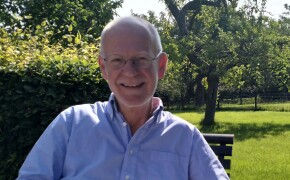Adding value for circular economy
Why? Some 100 billion tons of raw materials are consumed yearly. This has been tripled in the last 50 years. Also some 60 Gt of Greenhousegas is emitted every year. On a global scale 9% is circular. So 91% is wasted and a huge volume of materials and its value is lost. Business as usual will exhaust the earth further and a transition from a linear to a circular economy is needed. So cycles have to be closed, the value of materials and goods have to be kept in the loop and waste has to be recycled and reused as raw materials. What regional public authorities can do? Last year the region of Noord-Brabant (Netherlands) has decided to implement circular strategies and triple helix innovation models for technology and circular business models in the manufacturing industry, construction sector and in the bio-based economy. For example the existing circular bio-based ecosystem in the western and rural part of Noord-Brabant, between the seaports of Rotterdam and Antwerp will be developed further. How? By applying for an interregional cooperation project in INTERREG EUROPE. Aim of the project is to provide the participating regions with policy frameworks and instruments for organizing effective sustainable economic ecosystems that are adapted to the principles of circular economy. More specific objective is to organize triple helix and open innovation ecosystems for circular business models in the value chains of the manufacturing industry, construction sector and bio-based economy that are located in the proximity of agglomerations, knowledge hubs and industrial areas. The activities of the project are to transfer good practices; to develop innovative approaches, to produce agenda’s or action plans as policy frameworks and to monitor the region’s implementation. It wil result in seminars and conferences, regional stakeholder groups (including local authorities, business development agency, companies, university/and of applied science), implementation agenda’s as policy framework and in capacity building of policy makers to become circular economy experts.


